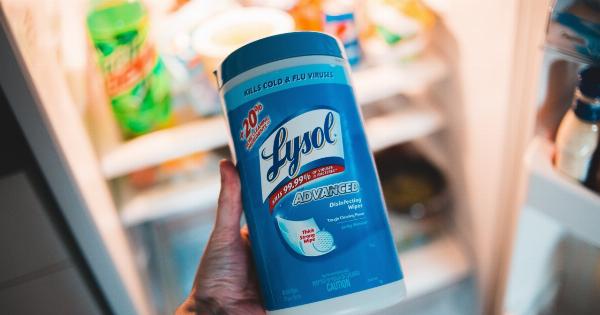Staphylococcus aureus, commonly known as staph, is a type of bacteria that can cause a range of infections in humans.
While staph infections were once easily treatable with antibiotics, there has been a rise in antibiotic-resistant strains of the bacteria in recent years. One potential factor contributing to this problem is the use of antibacterial additives in various consumer products. This article examines the association between antibacterial additives and staph infections.
The Rise of Antibacterial Additives
In response to concerns about the spread of bacteria and the need for improved hygiene, many companies have started incorporating antibacterial additives into their products.
Common examples include soaps, hand sanitizers, cleaning agents, and even textiles. These additives are typically designed to kill or inhibit the growth of bacteria.
Understanding Staph Infections
Staph infections can vary in severity, ranging from minor skin infections to life-threatening conditions like pneumonia or sepsis. Staph bacteria can enter the body through cuts, wounds, or even through the nasal passages.
Once inside, they can multiply and cause an infection. Symptoms of a staph infection may include redness, swelling, pain, and the formation of pus-filled abscesses.
The Antibacterial Additive Connection
Research has shown that certain antibacterial additives, like triclosan and triclocarban, can promote the growth of antibiotic-resistant bacteria.
These additives may disrupt the natural balance of bacteria on and inside our bodies, allowing the opportunistic Staphylococcus aureus to thrive. Additionally, staph bacteria can acquire resistance genes from other bacteria present in the environment, further enhancing their ability to resist antibiotics.
Studies on Antibacterial Additives and Staph Infections
A number of studies have examined the relationship between antibacterial additives and staph infections. One study published in the Journal of Antimicrobial Chemotherapy found that triclosan exposure increased the likelihood of nasal colonization by S.
aureus, increasing the risk of infection. Other studies have also shown similar associations, indicating a potential link between antibacterial additives and the proliferation of staph bacteria.
The Role of Overuse
Another factor contributing to the association between antibacterial additives and staph infections is the overuse of these products. In an attempt to eradicate all bacteria, individuals may excessively use antibacterial soaps and sanitizers.
This not only disrupts the natural balance of bacteria on our bodies but also exposes bacteria to sub-lethal doses of these additives. This can inadvertently promote the development of antibiotic resistance in staph bacteria.
Regulatory Measures and Concerns
In recent years, regulatory bodies like the U.S. Food and Drug Administration (FDA) have raised concerns regarding the safety and effectiveness of certain antibacterial additives.
The FDA has banned the use of triclosan and triclocarban in over-the-counter antiseptic wash products due to insufficient evidence of their effectiveness and potential risks, such as contributing to antibiotic resistance.
Alternatives to Antibacterial Additives
Some companies have started exploring alternative methods to reduce the risk of bacterial contamination without relying on antibacterial additives.
These include the use of physical barriers, such as silver-infused textiles or copper surfaces, which have natural antimicrobial properties. Other approaches involve improving hygiene practices, emphasizing regular handwashing with regular soap and water, and ensuring proper wound care.
Educating the Public
As the association between antibacterial additives and staph infections becomes clearer, it is crucial to educate the public about the potential risks.
Individuals should be aware of the limited benefits of antibacterial products compared to regular soap and water. Additionally, proper antibiotic use and compliance with prescribed regimens can help prevent the development of antibiotic-resistant staph infections.
The Way Forward
Further research is needed to fully understand the impact of antibacterial additives on staph infections and antibiotic resistance. Additionally, efforts should focus on developing safer and more effective alternatives to these additives.
By striking a balance between hygiene and the potential risks of antibacterial additives, we can combat staph infections while minimizing the emergence of antibiotic-resistant strains.






























